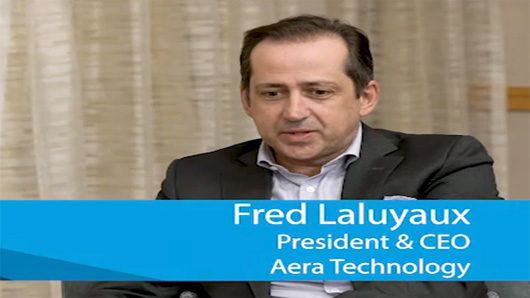
Visit Our Sponsors |
|
|
|
|
|
|
|
|
|
|
|
|
|
|
|
|
|
|
|
|
|
|
|
|
|
|
|
|
|
|
|
|
|
|
|
|
|
|

Just as modern vehicle technology is spurring the development of driverless cars, supply chains are moving toward autonomous decision systems, aided by analytics and artificial intelligence, says Fred Laluyaux, president and chief executive officer of Aera Technology.
Just as modern vehicle technology is spurring the development of driverless cars, supply chains are moving toward autonomous decision systems, aided by analytics and artificial intelligence, says Fred Laluyaux, president and chief executive officer of Aera Technology.
SCB: What do we mean by the term “self-driving supply chain”?
Laluyaux: If you think about a self-driving car, what are we doing? We’re digitizing the operating system, which is the driver. We're coming up with a system that's real-time and always on, connected outside and in. It’s thinking, learning, and autonomous in its ability to make a decision and act on it.
You can apply that analogy to the supply chain. Imagine a cognitive operating system, a brain that sits on top of the transactional tools and is real time and always on. It, too, is thinking and learning, connected outside and in, and autonomous in its ability to make decisions and take actions.
SCB: Do you mean to extend the metaphor of the self-driving car to the point where we we’re talking about taking humans out of the decision-making loop completely?
Laluyaux: The way the tool works is that it provides recommendations to users that augment your forecast and move inventory. The thinking that leads to that decision is done by the self-driving supply chain, but the user is involved in the approval or rejection of the recommendations that are made. However, the system can also go full autonomy. It can crawl your transaction systems, understand the data, make decisions, and act autonomously.
SCB: So which direction is the technology going?
Laluyaux: It's really a combination of both. In some cases we see supply-chain processes being completely autonomized, where the system runs 24/7 for fairly simple decisions that don’t require human intervention. But in other cases, for more complex processes that require thuman experience and expertise, then the system digitizes the recommendations, and asks for user input.
I'll give you an example. One of the processes we see getting digitized through the “self-driving” process is the creation of promotions. That process is fairly complex — you have to blend data coming from point of sale, then apply a lot of algorithms. But you also need the human touch to know it's not the right idea to do a promotion for this product in that period of time. Here we need to have planners or account managers who intimately know the account to interact with the intelligence in the system.
SCB: What if the conclusion of the system is counterintuitive and yet correct? The machine is right but the human thinks it's wrong, what then?
Laluyaux: I'll go back to the self-driving car analogy. If your car’s system says, "Switch lanes now, then take this road,” you as a human might choose to override that decision, and put your hands back on the wheel and drive the way you want. At the end of the journey, the system will tell you, "The decision you made actually cost you two minutes.” So for the next time, you’ll say, "Maybe I should learn from the system." In other cases, the human will be right, and it’s the system that learns from that decision. The same goes for self-driving supply chains. Operators can override the system’s recommendations, at which point we examine the reason code. So the system can learn from human interaction, and over time provide more accurate recommendations.
SCB: Can the system explain its reasoning?
Laluyaux: It has to be a glass box, not a black box. If you can’t explain why you’re making a recommendation, then the recommendation is going to be ignored.
SCB: How important is it for the system to provide different possibilities and “what-if” scenarios, then allow humans to choose from among them?
Laluyaux: The supply chain is a combination of short-range and long-term planning decisions. Every time you look at long-term plans, the human's ability to try out some hypotheses increases. But when you're talking about short-term optimization, it might be fully digitized because the human brain doesn't have the time to process that quickly. The further the range, the more human what-if capability. The shorter the range, the more automation. That's how we see it.
SCB: Do people come to trust the system when they realize it’s more often right than wrong? And does that mean that in the future, the percentage of actions dictated by the machine increases?
Laluyaux: That's what it means, but it also means that humans will have more time to spend on strategic decisions. When it comes to complex, long-term decision-making, that's when you see less automation and more augmentation.
SCB: Do you see an eventual future where a truly autonomous supply chain makes its own decisions based on input and output?
Laluyaux: It’s no different than what happened the shop floor in the last 50 years. We went from people doing work supported by machines, to the work being done by machines controlled by people. That role is always going to be there.
SCB: Even so, it seems like the self-driving supply chain will arrive sooner than the self-driving car.
Laluyaux: I think that the true intelligent supply chain is going to take a while before it's a reality.
RELATED CONTENT
RELATED VIDEOS
Timely, incisive articles delivered directly to your inbox.

